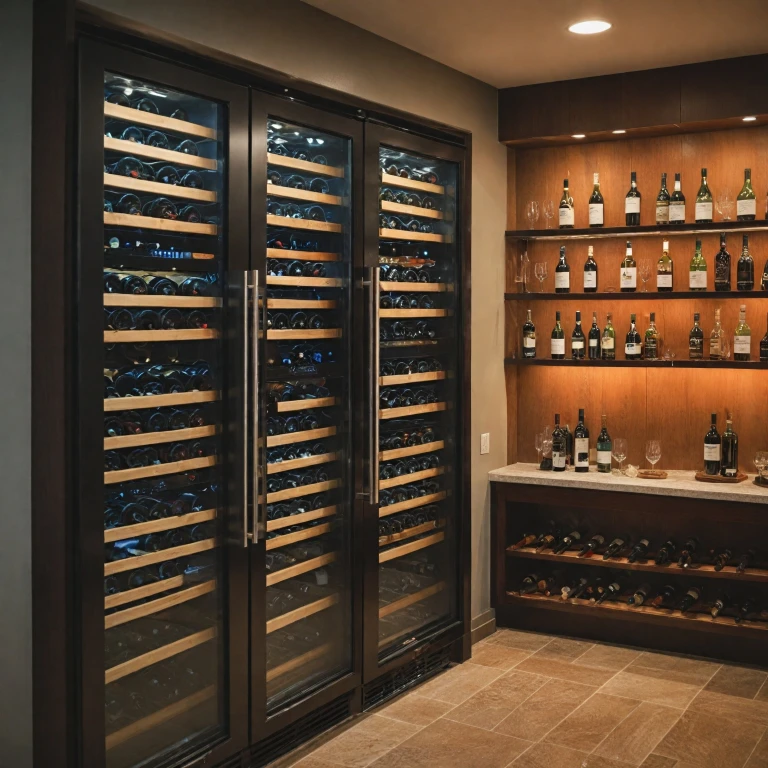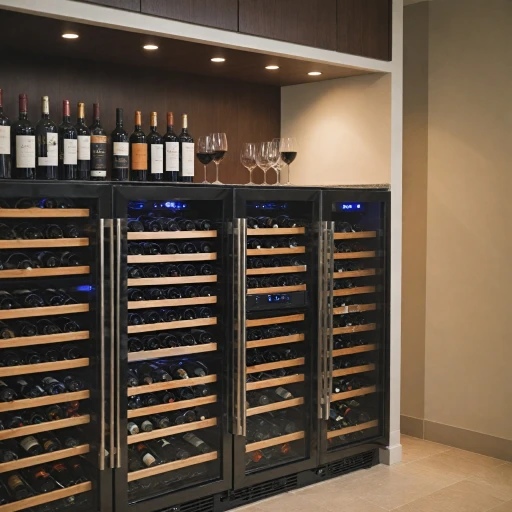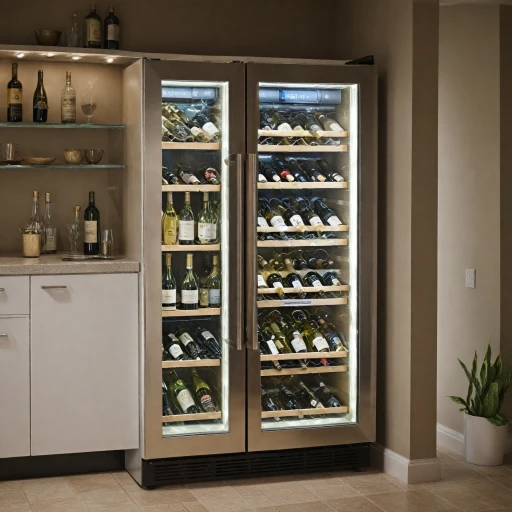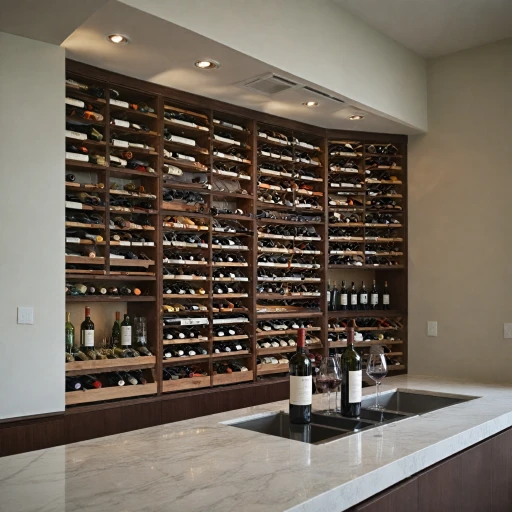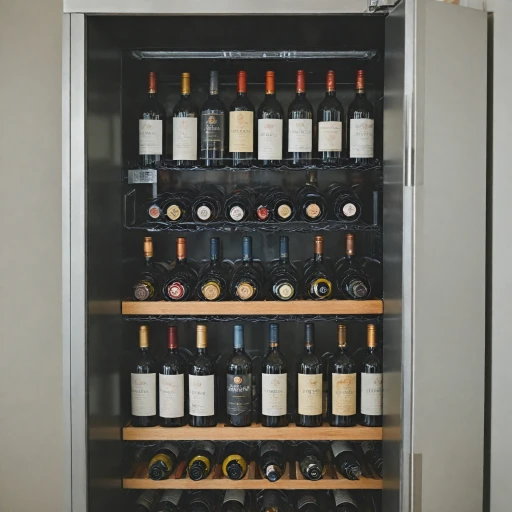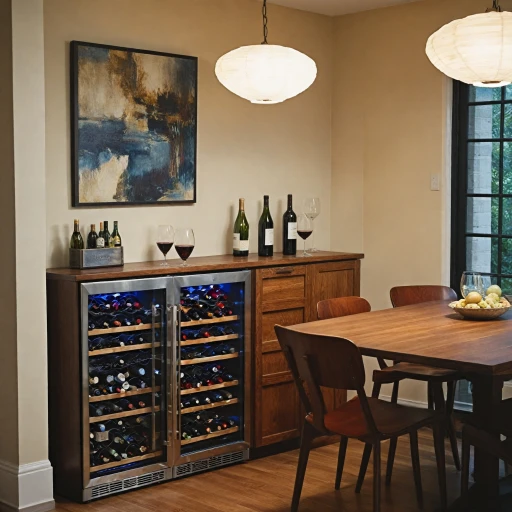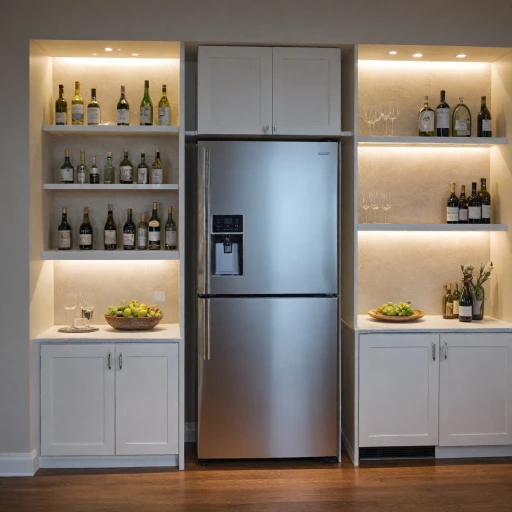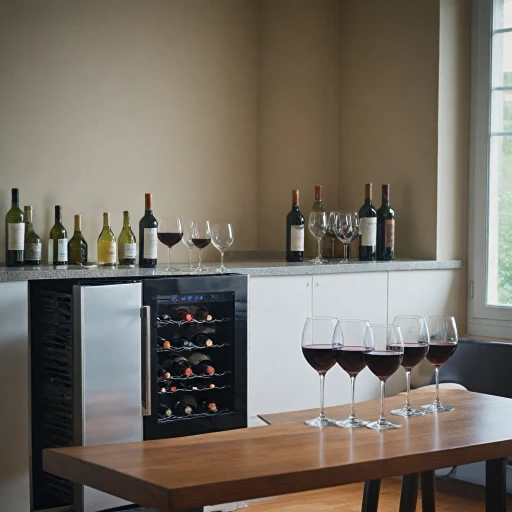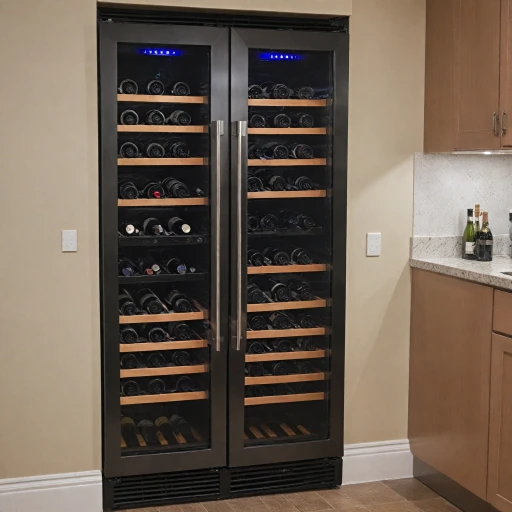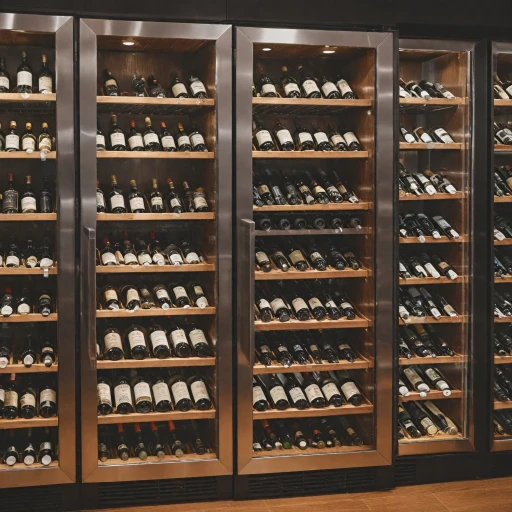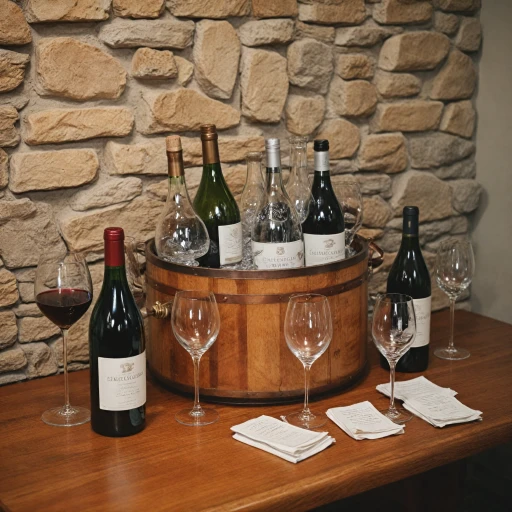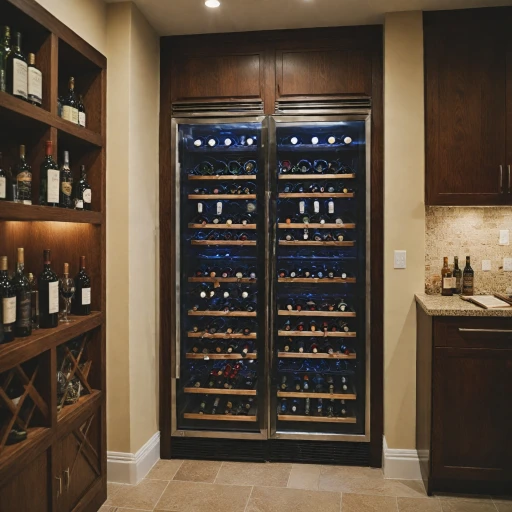
Understanding the Importance of Temperature Control
Why Temperature Matters in Wine Storage
Keeping your wine at the right temperature range is crucial for preserving its flavor and aroma. Unlike other beverages, wine is sensitive to changes in temperature, and incorrect settings can lead to premature aging or spoilage. A well-calibrated wine refrigerator helps to maintain the delicate balance of taste and bouquet that wine enthusiasts cherish.
Most wine coolers today come with either single zone or dual zone options, catering to the varying needs of wine storage. Single zone coolers are ideal for wines that require similar temperatures, while dual zone coolers are perfect for storing both red and white wines which require different temperatures. Understanding the capabilities of your wine fridge and its temperature settings is your first step towards optimal wine storage.
It's important to distinguish between wine storage conditions and serving temperature. While the latter might vary based on preferences and types, the former should remain constant to ensure long-term preservation. This is where a reliable wine cooler comes into play, maintaining consistent temperatures despite external changes.
Freestanding wine coolers and built-in wine refrigerators offer flexibility in terms of placement, but it's crucial that they are set correctly to protect your wine collection. Explore more about the intricacies of ideal temperature settings for wine fridges.
Ideal Temperature Ranges for Different Types of Wine
Choosing the Right Temperature for Each Wine Variety
Selecting the ideal temperature for your wine refrigerator is crucial for preserving the distinct characteristics of different wine types. Just like each grape variety brings its unique aroma and taste, it also demands a specific temperature range to flourish in storage. Understanding these nuances can enhance your wine drinking experience significantly.
Red wines and white wines have different optimal temperature needs. Red wines, such as Merlot or Cabernet Sauvignon, typically thrive in a slightly warmer environment, usually between 55°F and 65°F. On the other hand, white wines like Chardonnay or Sauvignon Blanc require cooler temperatures, often ranging from 45°F to 55°F. This ensures that the vibrant acidity and crispness of white wines are maintained.
If you’re using a dual zone wine cooler, you have the luxury of setting separate temperatures for different types of wines in different compartments. This feature is particularly beneficial for collectors with a diverse wine selection. Single zone wine coolers can also be effective, especially if your collection predominantly consists of either red or white wines.
For a more detailed guide on which temperatures to set for various wine types, visit our comprehensive temperature settings blog.
Incorporating the best practices for wine storage, including the consideration of temperature for both wine types and their storage duration, ensures that every bottle you serve is at its peak flavor.
Common Mistakes in Wine Refrigerator Temperature Settings
Frequent Pitfalls in Setting Temperatures for Wine Storage
One of the most common pitfalls wine enthusiasts encounter when managing their wine refrigerator is setting the incorrect temperature range. Maintaining the right temperature is crucial for preserving the quality and taste of your wines. A misjudged temperature setting can result in a less than optimal storage environment, potentially spoiling the wine.
Here are some frequent mistakes to avoid:
- One-Size-Fits-All Approach: A single temperature setting is not ideal for all types of wine. Whites and reds require different serving temperatures, and a dual zone wine cooler allows you to store them in their respective optimal conditions. Ignoring this flexibility can harm the wines’ aromatic profile.
- Incorrect Temperature Ranges: Often, wine enthusiasts misjudge the appropriate storage temperatures. Reds should typically be stored around 55°F (13°C), while whites and sparkling wines thrive at cooler temperatures, around 45°F (7°C). Optimal temperature settings are essential to ensure the longevity and quality of your collection.
- Using Beverage Coolers: Using a regular beverage fridge meant for beverages like sodas can lead to temperature fluctuations. Wine requires more precise temperature control than usual beverage coolers provide.
- Overlooking Temperature Adjustments for Seasons: A freestanding wine refrigerator might require adjustments based on seasonal changes, aligning with environmental temperature shifts to maintain consistent internal conditions.
A well-designed wine refrigerator, especially a dual zone wine fridge or even a single zone for those focusing on one type, provides specific features like stainless steel exteriors and LED displays, making precise temperature control easy. By understanding and avoiding these mishaps, you can successfully store your wines and savor their intended flavors and aromas over time.
For more insights on crafting the best storing practices, visit the crafting the perfect wine cabinet plans guide to enhance your wine storage experience.
Adjusting Your Wine Refrigerator for Seasonal Changes
Adapting Your Wine Refrigerator for Seasonal Variations
To ensure your wine cooler continuously offers the best storage conditions no matter the season, adapting its temperature settings is crucial. Seasonal changes can impact how effectively your wine refrigerator maintains optimal conditions. Both summer heat and winter chill might subtly influence the appliance's ability to preserve your wines at their finest. Summer months can pose a challenge for your wine storage unit. Increased room temperatures might strain your fridge, especially if it’s a freestanding model placed in a brightly lit or non-ventilated area. To combat this, make sure your wine cooler is positioned where direct sunlight and heat won’t affect its performance. Additionally, monitor the internal temperature more frequently during this season to ensure it remains within the perfect range for your wine collection, from delicate white wines to robust reds. In contrast, winter brings cooler ambient temperatures that might lead to inadvertent overcooling. While most wine coolers and beverage centers are built to maintain stability, prolonged exposure to low external temperatures might require slight adjustments. Ensure that dual zone wine fridges are correctly balanced, as one zone may respond differently to temperature shifts compared to a single zone model. For those living in regions with drastic seasonal shifts, investing in a wine fridge with LED temperature displays and stainless steel construction can help in constantly monitoring and adjusting your appliance. These models often provide clearer temperature readouts and more efficient insulation. Regular checks and minor seasonal tweaks to the thermostat can make a significant difference in storing wine for both casual drinking and long-term aging effectively. Keep in mind, the best serving temperature can vary slightly, so adjust settings with thought to the specific types of wines in your collection. If you find yourself frequently adjusting settings seasonally, it may benefit you to explore the integration of a more temperature-stable wine cellar as part of your wine storage strategy.The Role of Humidity in Wine Storage
The Impact of Humidity on Wine Preservation
Maintaining the right humidity level is crucial when considering wine storage, whether it is in a wine refrigerator, cooler, or dedicated wine cellar. Simply controlling temperature is not enough to ensure the proper aging and flavor development of your wines over time.- Why Humidity Matters: Humidity keeps the cork from drying out in wine bottles. A dried cork can lead to wine oxidation and spoilage, which could compromise your wine's taste and integrity.
- Optimal Humidity Level: Aim for a humidity range between 50-70%. This range keeps the cork moist but not so much that mold or mildew becomes an issue.
- Types of Wine Coolers and Their Humidity Features: Some wine fridges and dual zone wine coolers come with built-in humidity controls. Freestanding wine storage options often include these features to manage humidity effectively, enhancing preservation for both red and white wine.
- Adjusting Humidity in Single Zone and Dual Zone Coolers: If your wine cooler does not feature humidity control, you might consider using a small dish of water or a humidity control pack. These can ensure your wine fridge maintains an effective environment for storing wines properly.
Troubleshooting Temperature Issues in Your Wine Refrigerator
Tackling Common Temperature Problems in Your Wine Refrigerator
Ensuring your wine refrigerator is set to the right temperature is crucial for preserving the flavor and quality of your wine collection. However, you might encounter temperature issues that could affect your wine storage. Let's explore some troubleshooting steps to address these problems.
1. Inconsistent Temperature Readings: If your wine fridge displays inconsistent temperature readings, it might be due to frequent opening and closing, which allows warm air to enter and disrupts the internal environment. Limit door openings and ensure a proper seal to maintain a stable temperature range.
2. Incorrect Temperature Setting: Sometimes the temperature setting might not align with the recommended serving temperature for the wines you store. Verify that the control panel is set to the ideal range for either red, white, or dual zone wines, depending on the type of cooler you have.
3. Location of the Fridge: The placement of your wine fridge can directly affect its efficiency. Ensure that your freestanding wine cooler is situated in an area with adequate ventilation, away from direct sunlight or heat sources, such as ovens or radiators.
4. Malfunctioning Cooling Mechanism: If after checking all the above, your wine refrigerator still doesn’t maintain the temperature, the cooling mechanism might be faulty. This could be due to a problem with the compressor, fans, or temperature controller. Consulting a professional for maintenance might be necessary.
5. Overloading the Storage: Overloading the cooler beyond its capacity can lead to poor air circulation, causing temperature fluctuations. Make sure to store wines in a balanced manner, allowing space for air to circulate within the zone.
By carefully managing these factors, you can ensure that your wine remains in optimal condition, ready to serve at the best possible temperature.
